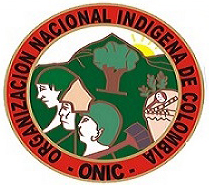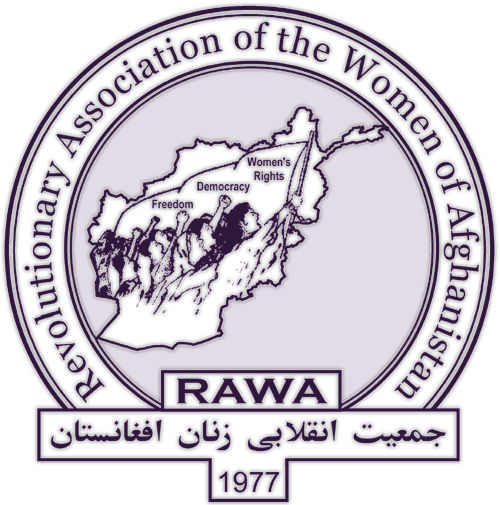Amazon Theater
Ecuador to export via north Peru pipeline
Ecuador will use the pipeline that links Peru's northern Amazon oil zone to the Pacific coast to transport crude under a deal reached this week. Quito's Non-Renewable Natural Resources Minister Wilson Pastor hailed the bi-national accord as "true energy integration, in which two countries, Ecuador and Peru, are joining forces and needs." He said Ecuador will pay a fee of $10 per barrel of crude extracted from the southern zone of the Ecuadoran Amazon. A 100-kilometer feeder pipeline will be built from Ecuador's border to the Oleoducto NorPeruano, which runs to Bayovar port in Puira region. The deal could facilitate a major industrial thrust into Ecuador's southern Amazonian region. Most of Ecuador's exported oil currently comes from the northern part of its Amazon region, via the SOTE and OCP pipelines. (EFE, Aug. 9; RPP, Aug. 8; A Barrel Full website)
Brazil: Xavante territorial rights affirmed following ranchers' uprising
Brazil's indigenous affairs agency FUNAI issued a statement July 5 affirming the validity of a May 2010 ruling of the First Regional Federal Tribunal in Mato Grosso state that called for the return of usurped lands of the Xavante indigenous people. FUNAI demarcated the 165,000 hectares as Xavante indigenous territory in 1992, but ranchers and soy producers now in possession of the lands in question challenged creation of the reserve, to be called Marãiwatsede, near the towns of Cuiabá and Alto Boa Vista. The Xavante were pushed from their lands by Brazil's military government in 1966, and the Marãiwatsede area is now one of the most completely deforested areas of the Amazon Basin. When Xavante led by chief Damião Paridzané held protests at the Rio+20 Summit on Sustainable Development last month to pressure for return of their lands, local ranchers in the Marãiwatsede territory launched an uprising, blocking roads and burning bridges.
Brazil: indigenous tribes occupy Belo Monte dam site
July 4 will mark two weeks that the construction site of the planned Belo Monte dam in Brazil's Pará state has been under occupation by some 200 members of the Xikrin, Arara, Juruna, Parakana and other indigenous peoples, many armed with spears. Brazilian government officials and representatives of the utility Norte Energia are slated to meet with protestors on July 9, but occupiers pledge to stay on the site at least until then. According to a statement from the tribes, 17 indigenous villages from 13 ethnic groups are now represented at the occupation, which has slowed work at the site. The occupiers demand "that construction of the Belo Monte dam be stopped until Norte Energia and the government can adequately mitigate the disastrous impacts of the dam on local indigenous communities."
Bolivian indigenous leaders "unmask" Evo Morales at Rio People's Summit
At the People's Summit being held on the sidelines of the Rio +20 UN environmental summit in Rio de Janeiro, Brazil, leaders of the Confederation of Indigenous Peoples of the Bolivian Oriente (CIDOB) denounced President Evo Morales for violating the rights of indigenous peoples in Bolivia's eastern lowlands. Announced CIDOB vice president Nelly Romero: "We have unmasked the double standard that [Morales] has in his discourse on the international level, making believe that he is a defender of indigenous peoples, of the rights of the indigenous peoples of Mother Earth, of the natural resources and the forest." Celso Padilla, president of the Continental Council of the Guaraní People, noted the death of two indigenous leaders in a traffic accident on the cross-country march now underway to oppose construction of a highway through the TIPNIS indigenous reserve. "This wouldn't have happened if the president had not been infatuated with building the highway through the TIPNIS; the only one responsible is him." (Erbol, June 20)
Bolivia: indigenous opposition to Amazon highway fractures
With the Ninth Indigenous March, called to protest construction of a road through the Isiboro Sécure National Park Indigenous Territory (TIPNIS), now resting at Caranavi, in the Yungas region of La Paz department, a new blow to the movement was registered June 8 as leaders loyal to President Evo Morales affected a change of leadership in the main organization behind the march, the Confederation of Indigenous Peoples of the Bolivian Oriente (CIDOB). After an "extraordinary assembly" in Santa Cruz, 10 regional CIDOB leaders announced that they had voted to "disown" the organization's president, Adolfo Chávez, for "violating" internal norms. They said a Grand National Assembly of Indigenous Peoples (GANPI) would be held in 30 days to chose a replacement for Chávez, the main leader supporting the Ninth March.
Peru: Amazon highway moves ahead in Congress, indigenous leaders protest
The Transportation and Communications Commission of Peru's Congress on June 7 approved Law 1035-2011, introduced by the fujimorista bloc, that would declare the "public necessity and national interest" of a new highway between Puerto Esperanza, Purús province, Ucayali department, and Iñapari, Tahuamanu province, Madre de Dios department—cutting through Alto Purús National Park, and territory believed to shelter isolated or "uncontacted" indigenous bands. Peru's Amazonian indigenous alliance AIDESEP and its Madre de Dios regional affiliate FENAMAD protested that the region's native inhabitants had not been consulted on the measure, and charged that the road would impact the Madre de Dios Territorial Reserve for isolated peoples. The law now goes to the full Congress for debate. But Verónika Mendoza, leader of the Commission on Andean, Amazonian and Afro-Peruvian Peoples, insisted that her commission should have to sign off on the bill before it goes to the floor as well. (InfoRegión, June 11; La Republica, June 10; AIDESEP, June 7)
Peru: Mick Jagger drawn into dispute over expansion of Camisea gas fields
UK-based indigenous rights advocacy group Survival International warns that Peru's government has drawn up "secret plans" for a natural gas exploration bloc in the Kugapakori Nahua Nanti Territorial Reserve, in what it calls a "flagrant violation" of laws that protect "uncontacted" Amazon tribes within such reserves. The existence of the bloc was first revealed in the April 5 edition of the Lima weekly Caretas, in an article about the Camisea gas project in the lowland rainforest of Cuzco region. While the text of the article didn't mention the new bloc, an accompanying map shows a "Fitzcarrald Bloc" lying immediately to the east of the Camisea consortium's Bloc 88. The map doesn't show the reserve, but Bloc 88 already superimposes the western edge of the reserve—to the protests of environmentalists and indigenous advocates. Survival writes that if confirmed, the Fitzcarrald Bloc "will cut the Nahua-Nanti Reserve in half, and put uncontacted tribes' lives in immediate danger."
Peru: Asháninka indigenous people fight hydro scheme in new war zone
Peru's Apurímac-Ene River Valley (VRAE), which exploded into the news last month when Shining Path guerillas briefly took 36 pipeline construction workers hostage, is the scene of a contest between the local Asháninka indigenous people and economic interests seeking to develop a hydro-electric mega-project in the area, to export power to neighboring Brazil. The proposed 2,200-megawatt Pakitzapango hydroelectric dam would flood much of the basin of the Río Ene, as the Apurímac is known after it enters the Amazonian lowlands. The project would mean relocation of 15 Asháninka communities, numbering some 10,000 inhabitants, and it is conceived as but the first of six dams in the area that together would generate more than 6,500 megawatts under a 2010 agreement signed with Brazil. All told, the five-dam project would displace thousands more people. Brazilian companies Electrobras, Odebrecht, Engevix, Camargo Correa, and the Brazilian National Development Bank (BNDES) are driving the push for the mega-project.















Recent Updates
14 hours 46 min ago
1 day 12 hours ago
2 days 10 hours ago
2 days 10 hours ago
4 days 11 hours ago
4 days 12 hours ago
4 days 12 hours ago
4 days 15 hours ago
5 days 18 hours ago
1 week 4 min ago